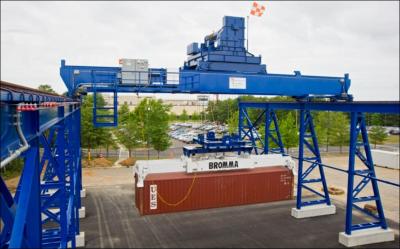The US Department of Homeland Security (DHS) has announced that researchers at the Transportation Security Laboratory (TSL) and Science and Technology Directorate (S&T) have developed Container Security Test Bed solution, which provides personnel from academia, industry and government the required tools to detect the threats posed by the contents of a cargo container.
 Outdoor Container Security Test Bed
Outdoor Container Security Test Bed
The US Department of Homeland Security protects the country from terrorists and keeps a check on illegitimate travel and trade through the US Customs and Border Security Protection which is also assigned the task of monitoring and screening of sea cargo containers. The check for chemical, radiological, biological weapons, explosives and drugs requires the accurate and quick screening of thousands of ocean cargo containers that enter the US ports every day.
The advanced Test Bed solution enables TSL engineers to simulate the cantilever cranes employed to unload the incoming container ships. It picks up, moves and places a container by mimicking the method and time taken for unloading each container and dropping in on the dock.
The Program Manager at the Science and Technology Directorate, Dave Masters stated that by using a mass spectrometer and a gas chromatograph, one can determine the contents of a 40 foot container in an hour. However, since the atmosphere of maritime container terminal does not provide the flexibility to run experiments, the CSTB aids in replicating not only the screening of the items but also the loading and unloading operations. The sensors need to be robust to survive the containers movements being hauled and slammed on the port.
The S&T researchers are urging technology developers to test various sensors at the CSTB since advanced detection technologies are required for rapidly sensing trace quantities of substances. To determine the presence of drugs, illicit substances and explosives, chemical based sensors can be used. Laser-based detection technologies are currently being developed to determine the physical properties of the target molecules.